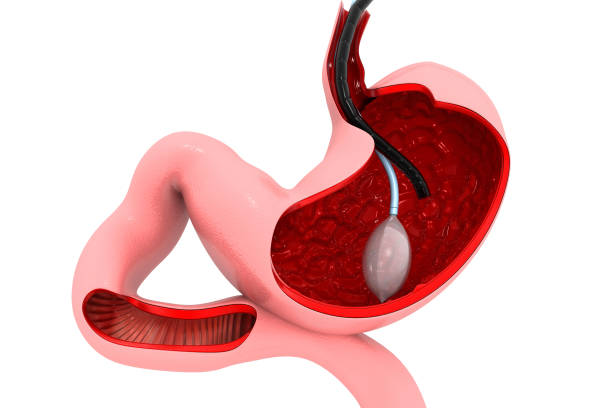In the quest for effective weight loss solutions, many individuals find themselves weighing the benefits and drawbacks of various surgical options. Among these, Endoscopic Intragastric procedures have emerged as a less invasive alternative to traditional weight loss surgeries. This blog will provide a detailed overview of both approaches, helping you navigate your options in the context of your weight loss journey.
Understanding Endoscopic Intragastric Surgery
Endoscopic Intragastric surgery involves the use of an endoscope—a thin, flexible tube equipped with a camera—to access the stomach without making large incisions. This method primarily includes procedures like intragastric balloon placement, where a silicone balloon is inserted and inflated in the stomach, creating a feeling of fullness.
Benefits of Endoscopic Intragastric Surgery
- Minimally Invasive: No large cuts or extensive recovery time are involved.
- Shorter Recovery: Most patients can return to normal activities within a few days.
- Reduced Risk of Complications: Fewer risks associated with major surgeries.
- Adjustable and Reversible: Certain procedures, like the balloon, can be removed if necessary.
Traditional Weight Loss Surgery
Traditional weight loss surgeries, such as gastric bypass or sleeve gastrectomy, involve making significant surgical alterations to the stomach and digestive tract. These methods are typically more invasive and require longer recovery periods.
Key Features of Traditional Surgery
- Permanent Changes: These surgeries involve permanent alterations to the digestive system.
- Longer Hospital Stay: Patients often require several days in the hospital for recovery.
- Higher Risk of Complications: Major surgeries come with an increased risk of complications, including infections and bleeding.
- Comprehensive Weight Loss: Many patients achieve significant and sustained weight loss.
Comparing Effectiveness
When it comes to effectiveness, both Endoscopic Intragastric and traditional surgeries can lead to significant weight loss. However, the degree of weight loss may vary depending on the individual’s commitment to lifestyle changes post-surgery.
Weight Loss Expectations
- Endoscopic Intragastric: Patients can expect to lose 10-20% of their total body weight within the first six months.
- Traditional Surgery: Patients can lose 50-70% of their excess weight within the first year.
Recovery and Lifestyle Changes
Both types of surgery require lifestyle changes to maintain weight loss. However, the recovery process differs significantly.
Recovery Process for Endoscopic Intragastric
- Quick Return to Normal Activities: Many patients resume daily activities within a week.
- Dietary Adjustments: A gradual transition from liquids to solid foods is typically recommended.
Recovery Process for Traditional Surgery
- Longer Healing Time: Patients may take several weeks to recover fully.
- Dietary Restrictions: A stricter, more gradual reintroduction of foods is often necessary.
Potential Risks and Complications
Understanding the risks and complications associated with both approaches is vital for informed decision-making.
Risks Associated with Endoscopic Intragastric
- Potential for Balloon Deflation: If the balloon deflates, it can cause discomfort and may require surgical removal.
- Nausea and Vomiting: Common side effects during the initial adjustment phase.
Risks of Traditional Surgery
- Postoperative Complications: Infection, leaks in the gastrointestinal tract, and blood clots can occur.
- Long-Term Nutritional Deficiencies: Patients may require lifelong vitamin and mineral supplementation.
Cost Considerations
The financial aspect of surgery is another crucial factor to consider when navigating your options.
Cost of Endoscopic Intragastric Surgery
- Generally Lower Costs: Endoscopic procedures often cost less than traditional surgeries due to their minimally invasive nature.
- Insurance Coverage: Some insurance plans may cover Endoscopic Intragastric procedures, depending on medical necessity.
Cost of Traditional Weight Loss Surgery
- Higher Surgical Fees: Traditional surgeries typically involve more significant costs due to hospital stays and extended recovery periods.
- Potential Long-Term Costs: Patients may incur additional expenses related to nutritional supplements and follow-up care.
Conclusion: Making an Informed Decision
Deciding between Endoscopic Intragastric and traditional weight loss surgery requires careful consideration of several factors. Evaluate your personal health, lifestyle preferences, and long-term weight loss goals.
Key Takeaways
- Consult with Professionals: Engage in thorough discussions with healthcare professionals to understand the best option for you.
- Consider Your Lifestyle: Reflect on how each option aligns with your lifestyle and weight loss aspirations.
- Think Long-Term: Consider not only immediate results but also long-term health and well-being.
Choosing the right weight loss solution is a personal journey, and understanding the nuances of each option is critical for achieving your desired outcomes. By considering the advantages and disadvantages of Endoscopic Intragastric compared to traditional surgery, you can make an informed choice that best suits your needs.





Comments